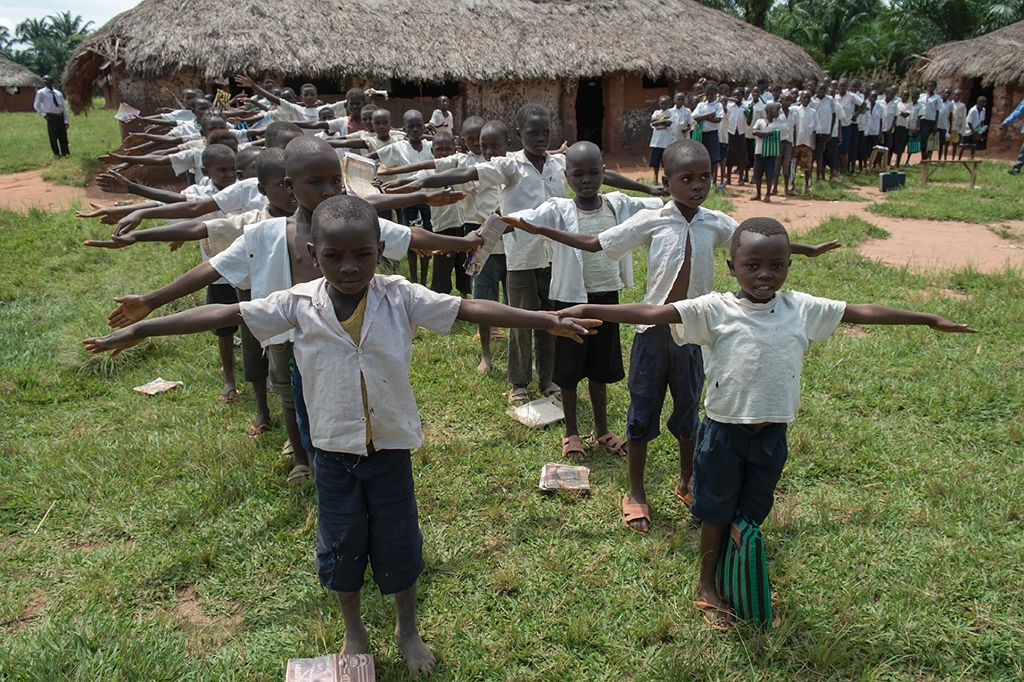
La formación. En la escuela rural de primaria y secundaria de Ngandajika “4 du Janvier” asisten unos 600 alumnos. En la República Democrática del Congo la tasa de alfabetización es muy baja, siendo 68,1% de la población analfabeta, y de éstos el 44% aprox. son mujeres. Con más de 75,5 millones de habitantes, la República Democrática del Congo, en el África central, es el segundo país más grande del continente y su selva el segundo pulmón más extenso del Planeta. Al mismo tiempo, la RDC es uno de los países más pobres del mundo, es el país con el Índice de Desarrollo Humano más bajo del mundo. Más del 70% de la población vive por debajo del umbral de la pobreza. Gran parte de los habitantes vive con menos de dos dólares al día. El ingreso nacional bruto per cápita es de 160 dólares al año. Escuela “4 du Janvier” de Ngandanjika (República Democrática del Congo), 2014. Foto © Patricia Bobillo Rodríguez
Formation. In the rural primary and secondary school of Ngandajika "4 du Janvier" about 600 students attend. In the Democratic Republic of the Congo the literacy rate is very low, with 68.1% of the population illiterate, 44% of whom are women. With more than 75.5 million of inhabitants, the Democratic Republic of the Congo, in Central Africa, is the second largest country on the continent and its forest is the second largest lung of the planet. At the same time, the DRC is one of the poorest countries in the world, the country with the lowest Human Development Index in the world. More than 70% of the population lives below the poverty line. Most of the people live on less than two dollars a day. Gross national income per capita is $ 160 per year. "4 du Janvier" School in Ngandanjika (Democratic Republic of the Congo), 2014. Photo © Patricia Bobillo Rodríguez
·